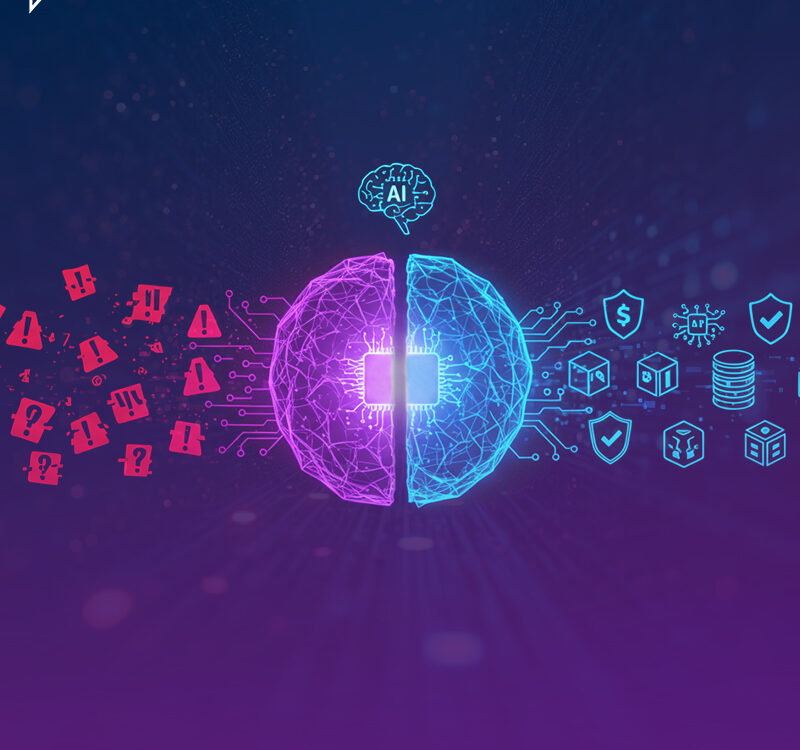
How Autonomous Security Workflows Are Redefining SOC Scalability
June 19, 2025
Why Your Security AI Is Still Guessing – And How Retrieval Can Fix It
June 22, 2025
How Autonomous Security Workflows Are Redefining SOC Scalability
June 19, 2025
Why Your Security AI Is Still Guessing – And How Retrieval Can Fix It
June 22, 2025Table of contents
- Introduction: Why This Conversation Matters Now
- The Numbers Don’t Lie: MTTR Is Slipping
- The Human Factor: Burnout in the First Line of Defense
- Budget Drain: The Hidden Financial Burden
- The Myth of Control: Why Holding Onto L1s Feels Safe But Isn’t
- What the Alternative Looks Like: Intelligent Triage and Analyst Upskilling
- Conclusion: It’s Time to Rethink the First Mile
Introduction: Why This Conversation Matters Now
Security teams are fighting a two-front war. On one side: a relentless stream of alerts, false positives, and fragmented telemetry. On the other: the internal toll of stretched analysts, long response times, and budget scrutiny. Despite this pressure, many SOCs still cling to a traditional model centered around Tier-1 (L1) analysts. But the cost of maintaining this approach is no longer justifiable not in terms of response speed, not in terms of human capital, and certainly not in terms of ROI.
It's time to challenge the status quo. Because keeping L1s at the center of incident response isn’t saving your SOCit might be quietly draining it.
The Numbers Don’t Lie: MTTR Is Slipping
Mean Time to Respond (MTTR) has always been a foundational metric in SecOps. The faster you detect, analyze, and contain an incident, the less damage it causes. But in the average enterprise SOC, MTTR isn’t improving it's getting worse.
Why? Because L1 analysts are spending too much time on manual triage. They’re flooded with alerts, many of which lack context or relevance. By the time they escalate a real threat to L2 or L3, hours (or days) may have passed.
In a 2023 report by Ponemon Institute, 63% of organizations reported that their average response time to high-severity alerts exceeded 6 hours. This isn’t about lack of tools. It’s about a process that over-relies on human bottlenecks in the first mile.
The Human Factor: Burnout in the First Line of Defense
Let’s talk about the human cost. L1 roles are designed for scalebut not for resilience. These analysts are typically entry-level, stuck in a loop of repetitive, noisy, and reactive tasks.
That leads to:
- High emotional fatigue
- Lack of growth opportunities
- Constant turnover
According to (ISC)², nearly 50% of cybersecurity professionals under the age of 30 plan to leave their current role within two years, largely due to burnout and job dissatisfaction.
Every time an L1 leaves, you’re not just losing talent. You’re resetting the clock on training, productivity, and institutional memory. The SOC becomes a revolving door.
Budget Drain: The Hidden Financial Burden
On paper, L1 analysts might seem like an affordable investment. But the full cost adds up fast:
- Base salary + benefits
- Licensing for security tools
- Time and resources spent on onboarding
- Lost productivity during turnover transitions
Not to mention the inefficiencies:
- Longer MTTR means greater incident impact
- Alert fatigue leads to missed threats
- Inconsistent triage introduces risk variance
When you quantify this, the cost per incident climbs. And for many SOCs, the L1 model is one of the least efficient spends in the security budget.
The Myth of Control: Why Holding Onto L1s Feels Safe But Isn’t
Many CISOs continue to rely on L1s because it feels safer. There’s a comfort in knowing a human is behind every triage decision. But comfort isn’t controlled.
Manual triage often introduces more uncertainty than it resolves:
- Context switches between tools mean important signals get lost
- Human error and fatigue skew prioritization
- Valuable time is spent on low-priority alerts
Meanwhile, modern threats operate at machine speed. Relying on a human-first process in a machine-paced world is like using a compass in a GPS era.
What the Alternative Looks Like: Intelligent Triage and Analyst Upskilling
The shift away from L1 doesn’t mean removing humans from security. It means putting them where they deliver the most value.
The future SOC model looks like this:
- Intelligent triage systems that sort, enrich, and prioritize alerts based on risk, context, and past incident outcomes
- Automation that handles noise, flags outliers, and connects related signals across systems
- Human analysts (L2/L3) focused on investigations, threat hunting, tuning detection logic, and complex response decisions
Even better? Existing L1 analysts can be upskilled into more strategic roles. Instead of babysitting alerts, they’re contributing to playbook development, detection improvements, and red teaming.
Conclusion: It’s Time to Rethink the First Mile
The first 60 seconds of an incident determine everything: scope, speed, cost, and containment. Leaving that moment to a fatigued, junior analyst working across disjointed dashboards isn’t just inefficient. It’s dangerous.
SOC leaders need to audit their MTTR, their burnout rate, and their operating expenses. If the L1 model is no longer delivering on any of those fronts, why keep investing in it?
It’s not just about replacing L1s. It’s about building a modern SOC that scales with intelligence, not just headcount.




